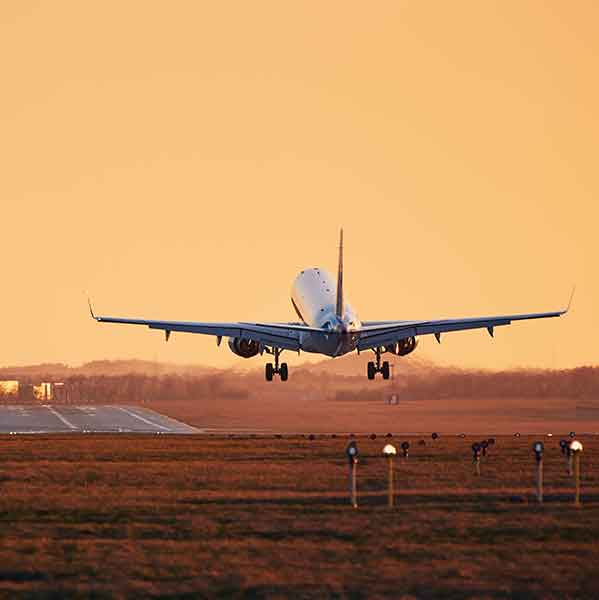
Air Traffic Control Academy
Admissions Requirments – ICAO
- Must be at least 18 years of age (See your country’s requirements)
- Have a High School Diploma or it’s equivalent
- Complete a Class II Medical or equivalent for respective country. (See your country’s requirements)
- Be eligible to be licensed as an ATC in your country of citizenship.
- Read, write, speak and understand the English language. (ICAO English Language Proficiency – Level 4 or Higher)
- Must be eligible for a USA Student Visa.
Note: Foreign students are licensed by the National Aviation Authority of their country and not by ICAO, the FAA or Advanced ATC.
The Process
- Make contact with an Advanced ATC Admissions Representative +1-229-219-2138
- Complete the Enrollment Application.
- Provide written proof from the National Aviation Authority of their acceptance of training by Advanced ATC.
- Provide proof of financial means for the tuition fee.
- Submit a copy of your:
- Passport
- High School Diploma OR Equivalent.
- Provide a Class II Medical or equivalent for respective country. (Find a list of approved AME’s on your country’s National Aviation Authority website.)
- Complete Housing Application (if applicable). Contact an Admissions Representative for housing options.


Advanced ATC Training Highlights
Advanced ATC is your solution for all the tools necessary to achieve your Control Tower Operator certification.
Advanced ATC Offers ICAO Training
Advanced ATC Inc. is an ICAO Trainair Plus™ certified ATC training organization, based in Valdosta, GA. AATC trains teams from across the globe. AATC specializes in in-country customized ATC training to government service providers.
Using state of the art simulators, Advanced ATC offers the full complement of ICAO classes to suit every need. Included courses are: ATC Basic (BAS) (ICAO 051), Aerodrome Control (ADC) (ICAO 052), Approach Control Procedural (APP) (ICAO 053), Approach Control Surveillance (APS) (ICAO 054), Area Control Non-Radar (Procedural) (ACP) (ICAO 055), Area Control Surveillance (ACS) (ICAO 054). AATC also specializes in customized refresher training, in all disciplines, to meet our client’s needs.
The Role of ICAO in Global Air Mobility
ICAO is a specialized United Nations agency that was established in 1944 to coordinate and reach a global consensus on international civil aviation standards and recommended practices (SARPs). The ICAO works to liaise between member states and facilitate continuity and uniformity where possible. The internal aviation agencies of each country interact with each other and participate in global policy and procedure creation through the ICAO.
ICAO manages various critical areas of aviation that simplify international travel and ensure safety and efficiency. It establishes the infrastructure for aviation, including communication protocols, navigation standards, and air traffic management guidelines. Additionally, ICAO sets standards for passports and regulates measurement units in aviation, such as pressure, temperature, and altitude, ensuring consistency across international operations.
Differences Between FAA and ICAO
It’s important to recognize the distinctions between the Federal Aviation Administration (FAA) and the International Civil Aviation Organization (ICAO):
Since the phraseology and procedures within individual countries can differ from the ICAO standards, each publishes an Aeronautical Information Publication (AIP) outlining these differences.
There are many differences between FAA and ICAO procedures and phraseology. Complicating the matter even more, many countries will use some ICAO procedures, some will use FAA procedures, and additionally, some may create their own procedures. For this reason it is very important for crew members to have a basic knowledge of FAA VS. ICAO differences and to spend the time researching country specific differences from ICAO.
The FAA’s AIP gives U.S. pilots a detailed breakdown of how the FAA standards that pilots are accustomed to following within the United States differ from ICAO standards.
Airport Codes: The ICAO airport code or location indicator is a four-letter code designating aerodromes around the world. These codes, as defined by the International Civil Aviation Organization and published quarterly in the ICAO Document Location Indicators. These codes are used by air traffic control and airline operations for flight planning. FAA Location Identifiers (LIDs) are recognized only within the United States.
The Collaborative Efforts of FAA and ICAO in Aviation Standards
The Federal Aviation Administration (FAA) and the International Civil Aviation Organization (ICAO) work closely together to establish standard practices in aviation. The key characteristic of their partnership is technical cooperation, where the FAA and ICAO exchange data and best practices to enhance their capabilities and integrate U.S. aviation practices into the global framework.
The FAA actively participates in ICAO assemblies and conferences, sharing its expertise on international aviation standards. ICAO sets global guidelines for safety, security, and environmental protection, while the FAA aligns its regulations with these standards to ensure smooth air travel.
Through these collaborative efforts, the FAA and ICAO create a cohesive global aviation system that enhances safety, efficiency, and security in international air travel.
Campus locations
Air Traffic Controllers are the unsung superheroes of our skies; working tirelessly behind the scenes to ensure the safe and efficient movement of aircraft.
USA (2 Locations)
Cayman Islands



